Field Trip To Criggion Quarry
A joint field trip to Criggion Quarry involving members from Mid Wales Geology Club and the Shropshire Geological Society took place on 12th April. We were shown round the quarry and the associated stone crushing equipment by the manager who is both a geology enthusiast and the possessor of an OU geology degree.
We were given a hand-out with the background geology of the site which is available online: Proceedings of the Shropshire Geological Society, 4 24-26. The rock being quarried is an albitised olivine dolerite of Lower Caradocian (upper Ordovician) age. It was intruded into the shales and volcanic tuffs of the Breidden Hill inlier.
The quarry is currently removing around 600,000 tons per annum which is crushed, sorted into different sizes and then sold, almost entirely for road stone. Apart from a few veins of quartz and calcite, the stone is very uniform with a polished stone value (PSV-a measure of how quickly an aggregate will polish or become worn smooth under the action of vehicle tyres) of 62. Interestingly, even the dust remaining after the quarrying and crushing is collected, as it is sold to the manufacturers of asphalt – so the Criggion Quarry product forms the stone base of our roads, and also forms part of the surface layer.
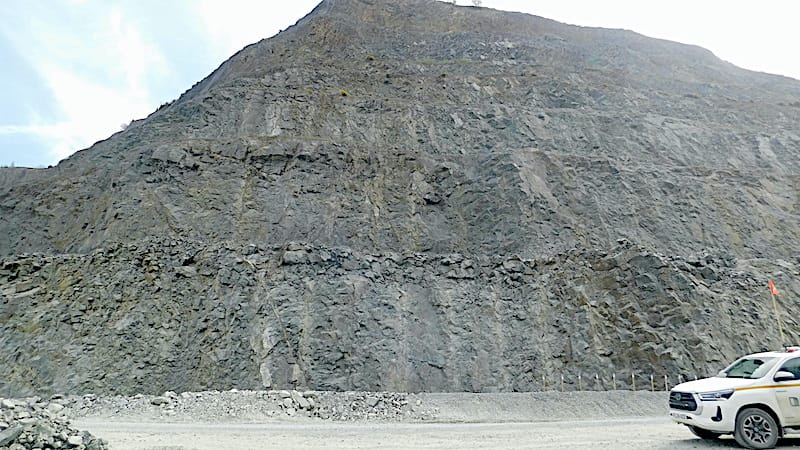
The eastern face of the quarry with a pick-up as the scale. Only 12 years ago, they started working the first bench near the skyline, which gives an indication of the amount of stone removed per year.
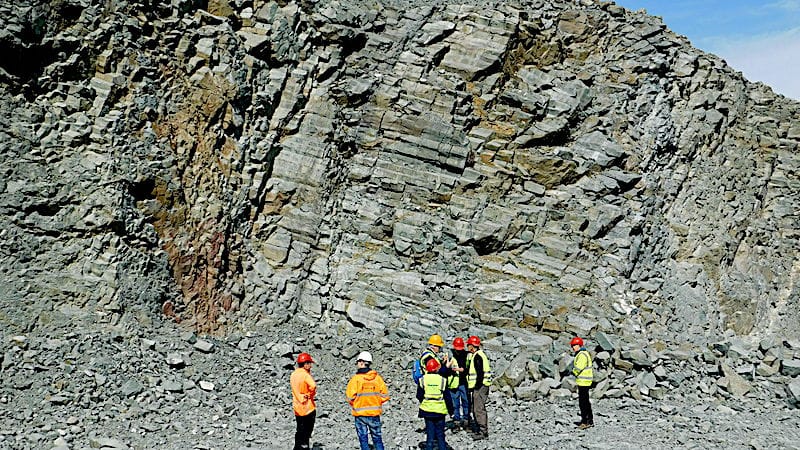
The western face of the quarry with some of the visitors for scale. The variation across the face is evident with a localised area of high iron content towards the left. There is widespread columnar jointing present consistent with an intrusion of molten lava; but there is no single orientation pattern present.
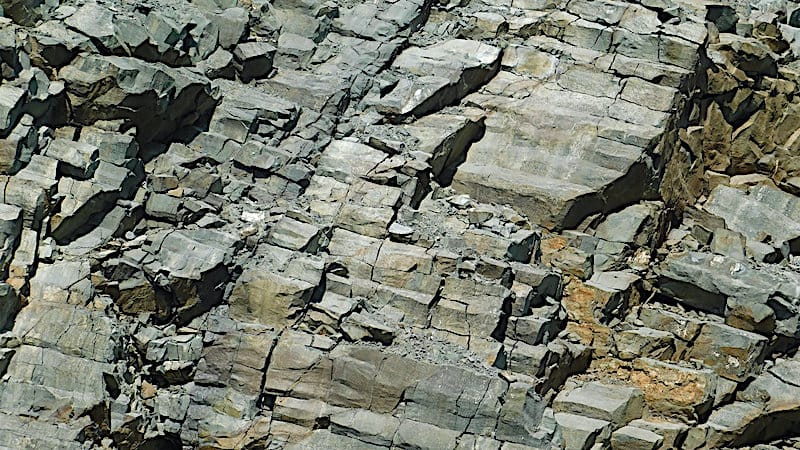
A closer view of the colunar jointing
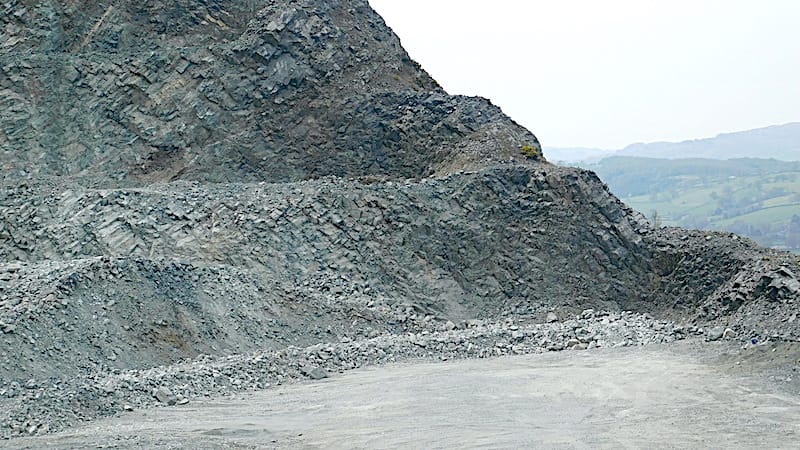
The western side of the intrusion forms the exposed edge of the hillside, and was presumably where the surrounding country rock once sat. This particular intrusion is, however, fault-bounded, so there is no obvious contact to be seen today. Nevertheless, the columnar jointing is clear at right angles to the periphery at the edge of the intrusion.
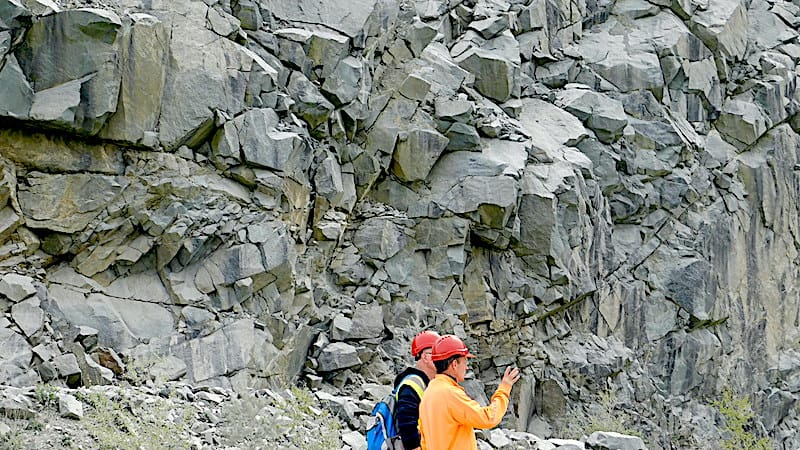
There are occasional large faults within the exposed quarry faces. Here is a long, curved fault running from near the top at the right, past the heads of two visitors, and then gently curving up to the left hand margin.